Writer/editor Stan Lee (1922-2018) made comic-book history together with Jack Kirby in 1961 with Fantastic Four #1. The monumental popularity of its new style inspired Lee to develop similarly themed characters — including the Hulk and X-Men with Kirby, Spider-Man and Doctor Strange with Steve Ditko, and Daredevil with Bill Everett. After shepherding his creations through dozens of issues — in some cases a hundred or more — Lee allowed other writers to take over, but he maintained steady editorial control. Eventually, he helped expand Marvel into a multimedia empire. In recent years, his frequent cameo appearances in Marvel’s films established Lee as one of the world’s most famous faces.
John Romita was born in 1930 and drew for Atlas Era Marvel Comics across many genres. By the time Stan Lee, Jack Kirby and Steve Ditko were defining the look and feel of the Marvel Age of Comics during the 1960s, Romita had made the move to DC Comics, where he was working exclusively behind the boards of the company’s many romance comics. It wasn’t until 1966 that he returned to Marvel Comics and the super-hero genre, drawing Daredevil before taking over from Ditko on what was fast becoming Marvel’s most important book, Amazing Spider-Man. Romita’s slick, clean craftsmanship would be a hallmark of his tenure, and his years of drawing beautiful women in DC’s romance books paid off with iconic renderings of Gwen Stacy, Mary Jane Watson and the other women in Peter Parker’s life.
John Buscema (1927-2002) literally wrote the book on being a Marvel artist — namely, How To Draw Comics the Marvel Way — and few were better qualified. His career dated back to the Timely/Atlas era of the late ’40s and early ’50s. Soon after beginning the Marvel Age of Comics, Stan Lee recruited Buscema from the advertising field to the Marvel Bullpen. Buscema followed a long run on Avengers with the long-anticipated first Silver Surfer series. He subsequently succeeded Jack Kirby on Fantastic Four, Thor and other titles. By the time of his retirement in 1996, Buscema had penciled nearly every Marvel title — including his personal favorite, Conan the Barbarian.
Larry Lieber helped introduce Ant-Man in Tales to Astonish, Iron Man in Tales of Suspense and Thor in Journey into Mystery. He also wrote Human Torch solo stories for Strange Tales. In 1968, he and his brother, Stan Lee, collaborated on the pivotal Amazing Spider-Man Annual #5, which revealed the secret of Peter Parker’s parents. Lieber both wrote and drew runs on Marvel’s top Western titles: Kid Colt Outlaw, Rawhide Kid and Two-Gun Kid. Later, he scripted Marvel UK’s Captain Britain, also contributing occasional covers.

![Amazing Spider-Man Epic Collection: The Goblin's Last Stand [New Printing 2]](https://images.penguinrandomhouse.com/cover/9781302967796?width=180)
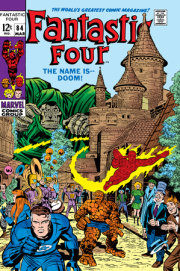
![X-Men Epic Collection: Lonely Are The Hunted [New Printing]](https://images.penguinrandomhouse.com/cover/9781302967697?width=180)
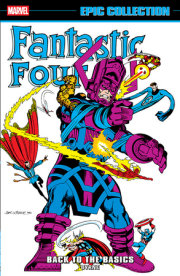
![Avengers Epic Collection: Under Siege [New Printing]](https://images.penguinrandomhouse.com/cover/9781302967642?width=180)
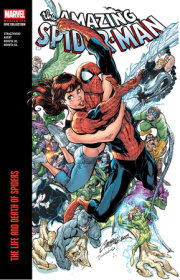




![Marvel Masterworks: The Amazing Spider-Man Vol. 4 [Remasterworks]](https://images.penguinrandomhouse.com/cover/9781302956066?width=180)


![Marvel Masterworks: The Silver Surfer Vol. 1 [Remasterworks]](https://images.penguinrandomhouse.com/cover/9781302956042?width=180)


![Silver Surfer Omnibus Vol. 1 John Buscema First Issue Cover [New Printing 2]](https://images.penguinrandomhouse.com/cover/9781302963583?width=180)
![Fantastic Four Epic Collection: The More Things Change... [New Printing]](https://images.penguinrandomhouse.com/cover/9781302963927?width=180)


![Marvel Masterworks: Captain America Vol. 1 [Remasterworks]](https://images.penguinrandomhouse.com/cover/9781302956028?width=180)
![Marvel Masterworks: The Fantastic Four Vol. 3 [Remasterworks]](https://images.penguinrandomhouse.com/cover/9781302956004?width=180)

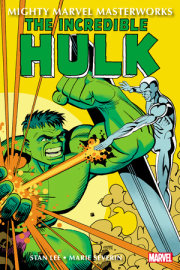


![Fantastic Four Epic Collection: World's Greatest Comic Magazine [New Printing 2]](https://images.penguinrandomhouse.com/cover/9781302960421?width=180)
![Captain America Omnibus Vol. 2 Carlos Pacheco Cover [New Printing]](https://images.penguinrandomhouse.com/cover/9781302958398?width=180)
![Incredible Hulk Epic Collection: Man Or Monster? [New Printing 2]](https://images.penguinrandomhouse.com/cover/9781302960438?width=180)


![Marvel Masterworks: The Amazing Spider-Man Vol. 3 [Remasterworks]](https://images.penguinrandomhouse.com/cover/9781302951429?width=180)
![The Invincible Iron Man Omnibus Vol. 2 Salvador Larroca Cover [New Printing]](https://images.penguinrandomhouse.com/cover/9781302958992?width=180)


![Marvel Masterworks: The Avengers Vol. 2 [Remasterworks]](https://images.penguinrandomhouse.com/cover/9781302951405?width=180)
![Avengers Epic Collection: Earth's Mightiest Heroes [New Printing]](https://images.penguinrandomhouse.com/cover/9781302957988?width=180)
![Captain America Epic Collection: Bucky Reborn [New Printing]](https://images.penguinrandomhouse.com/cover/9781302957858?width=180)

![X-Men Epic Collection: Children Of The Atom [New Printing 2]](https://images.penguinrandomhouse.com/cover/9781302957834?width=180)




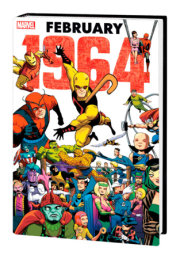








![Daredevil Epic Collection: Mike Murdock Must Die! [New Printing]](https://images.penguinrandomhouse.com/cover/9781302950569?width=180)

![Avengers Epic Collection: This Beachhead Earth [New Printing]](https://images.penguinrandomhouse.com/cover/9781302950521?width=180)








![Fantastic Four Epic Collection: The Coming Of Galactus [New Printing 2]](https://images.penguinrandomhouse.com/cover/9781302950415?width=180)




![Wolverine Omnibus Vol. 2 [New Printing]](https://images.penguinrandomhouse.com/cover/9781302945138?width=180)









